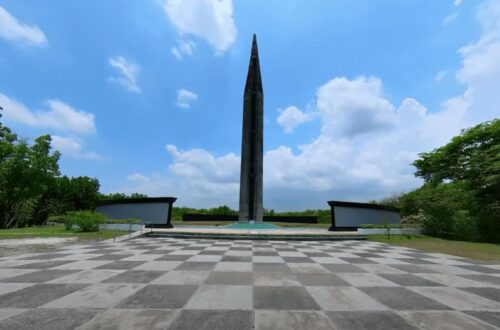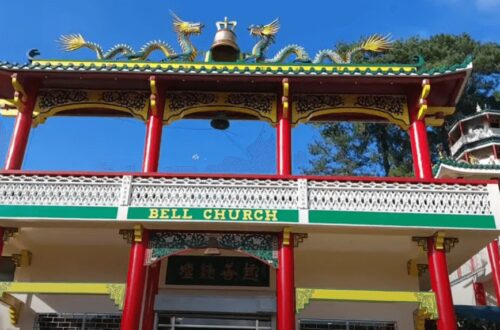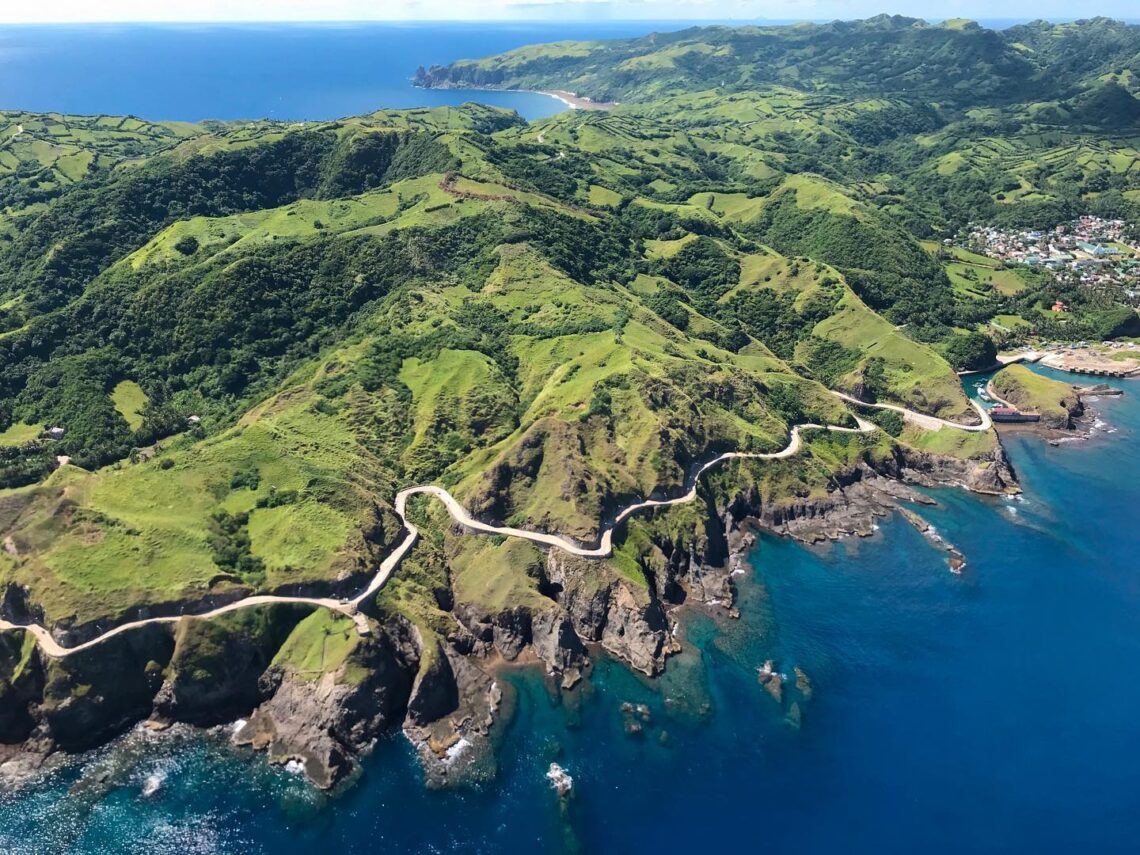
Batanes Travel Guide
Background
Batanes is the smallest province in the Philippines and it’s located in the northernmost part of the country in the Cagayan Valley region. It has a total land area of 209 square kilometers or 20900 hectares. Batanes is bordered by Bashi Channel on the north, the Philippine Sea and the Pacific Ocean on the west and east side, and Balintang Channel on the south. The capital of Batanes province is Basco which is situated on Batan Island. It is approximately 860 kilometers north of Metro Manila and 190 kilometers from the southern portion of Taiwan. Moreover, Batanes is just 840 kilometers west of Hongkong. Basco has a total population of approximately twenty thousand in the year 2022. Batanes has a total of six municipalities. First is Basco, the second is Itbayat, the third is Ivana, the fourth is Mahatao, the fifth is Sabtang and the sixth and last is Uyugan. Batanes is commonly known to the locals as the “home of the winds” because of its gusty and breezy weather condition that will provide visitors a refreshingly chill and peaceful vibes for a different taste of island life in the Philippines.
Batanes is considered to be one of the most typhoon-prone areas in the Philippines. Nevertheless, it’s one of the most popular tourist islands in the Philippines. Every year thousands of tourists coming from different parts of the world visit this place to see its precious landscape. Batanes is well known for its astonishing views of the Philippine Sea and the green rolling hills which are very akin to Scotland and New Zealand. Furthermore, it’s well known for very trustworthy locals which are attributed to most local and foreign tourists visiting the island. Ivatan is the most honest group of people in the Philippines. The Ivatan language also known as Chirin nu Ibatan is the main language used by the locals in Batanes. Even so, some locals there can understand and speak Tagalog and the English language.
Batanes have an equatorial climate like the rest of the provinces in the Philippines. The average yearly temperature is around 27-degree celsius and the month of April is considered to be the hottest month. On the other hand, the month of August is the wettest month because of the occurrence of typhoons in the northern section of the country. Meanwhile, January is said to be the coldest month in the Batanes group of islands.
Batanes is composed of three large islands which are occupied. First is Sabtang Island which is only thirty minutes away from Radiwan Port in Basco municipality. Second is Itbayat Island which is a four hours drive away from Basco municipality. In addition, Itbayat Island is home to more than 4000 Ivatans who is considered to be the native dweller of the island. Third and last is Batan Island which is considered to be the main island of Batanes and the most heavily populated island. Also, it is considered to be the core of trade and the seat of the provincial government of Batanes.
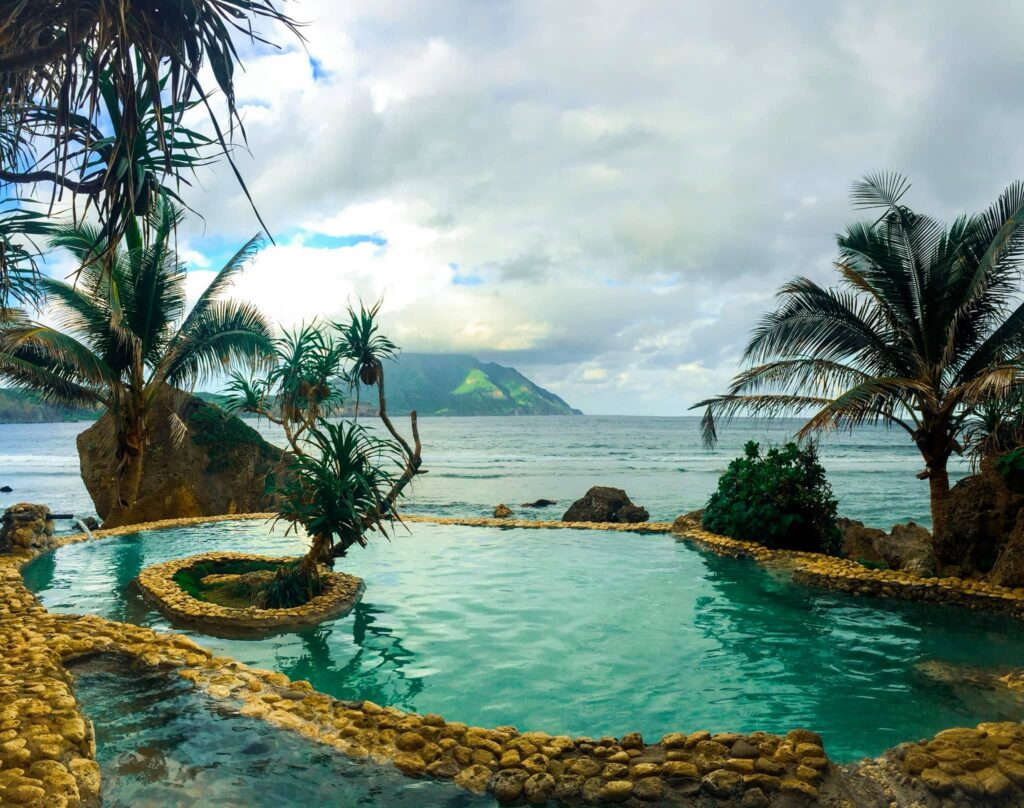
According to its splendid history, Batanes originated from a chain of volcanic and seismic activity in the year 325 BC when Mt. Iraya erupted. In the year 1687, a British sea rover named William Dampier recount the Ivatan people living during that time. In his statement, Ivatan is an undersized person with rounded light reddish brown eyes, chunky eyebrows, mediocre foreheads, short low noses, white teeth, black thick hair, and very dark copper-colored skin.
Batanes culture is a result of the prolonged history of combat and adaptation to strong typhoons, the cruel seas, and inadequate resources. It manifests the consistent relationship of Ivatan with their environment as no other cultures in the Philippines have vanquished the fury of the strong typhoons. The prehistoric Ivatans’ primary source of income is fishing, boatmaking, hunting, and seagoing. The Batanes group of islands have been conquered and fall into the hands of Spanish colonial power in the year 1783.
On June 26, 1783, the Spanish colonial power in the Philippines annexed the Batanes province which result in the freedom of the Ivatan. It is also marked as the start of the eventual founded and conquest process. Even so, the Ivatans would be under Spanish colonial power for nearly 115 years. On September 18, 1898, the Batanes group of islands gained independence after the Spanish colonial period in the Philippines have ended. Presently, June 26 is being celebrated across the Batanes group of islands as the foundation day. As of 2022, Batanes is now open for tourism activities.
As of this writing, I simply missed Batanes because it takes my breath away. I appreciate all the little things that the province has to offer. Even though there is no internet, no nightlife, no shopping malls, and no large buildings but still I fell in love with the peaceful place and staggering view. Therefore if you want to experience the best gift of nature, then what are you waiting for, planned and visit Batanes as soon as possible.

Name: Batanes
Location: between 121° 45′ to 122° 15′ east longitudes, and at 20°15′ north latitude in the Cagayan Valley region
Features: superb view of the Pacific Ocean and the Philippine Sea, rolling hills and clean environment
Places to visit in Batanes:
Torongan Cave – is an enormous cave which is located on Itbayat Island. According to its history, Torongan Cave is the first entry point and significant area in the Philippines where Austronesians from Southeast Asia and Taiwan arrived during the 4th millennium BC. Presently, at the top of the cave, a burial ground and boat shape burial marker above the hills can be seen by visitors. According to many historians, the hills are the interment ground for the cave’s ancient habitats and immigrants. In order to reach Torongan Cave, visitors must hike for fifty minutes through a compact and thick forest.

Sabtang Island – is the smallest of the three inhabited main islands in Batanes. It is often described by visitors as a heavenly place because the atmosphere there is so tranquil and pleasant. Sabtang Island has made up of precipitous mountains, verdant grassland, elevated limestone cliffs, and a beautiful stretch of white sand beaches with crystal clear water. From my point of view, I love all the natural attractions on this fantastic island including the Sabtang Lighthouse and souvenir store. I bought rattan bags as my souvenir and I even taste their famous Bukayo recipe.
In addition, the crime rate in Sabtang Island is super low and the place is really safe for local and foreign tourists. In my experience, our tour guide told us that there’s only four police had been assigned to cover the whole island. Also, he told our group to still be vigilant with our important belongings because there are a lot of tourists coming to this island. Overall, Sabtang Island is a perfect destination and getaway for solo travelers. To get to Sabtang Island, tourists need to ride a boat from the Port of Ivana in Basco which would last for approximately fifty-minute.
Basco Lighthouse – is the most recognizable framework in Batanes that has a height of sixty-five feet. The six-story lighthouse offers tourists an impressive 360-degree view of the Basco municipality, a picturesque scene of the Philippine Sea, and the towering Mt. Iraya from the top of its circular tower deck. Basco Lighthouse is located at the center of Naidi Hills. The lighthouse is easily noticeable by its white main column and red lantern area.
According to its past history, Basco Lighthouse served as the location of American telegraph facilities connecting to the local government unit of Batanes during the American colonial period in the Philippines. In the year 1941, at the height of the conflict between the United States and Japan during the Second World War, the Imperial Japanese Army bombed and destroyed the Basco Lighthouse. In the year 2003, the local government unit of Batanes constructed and rebuilt the Basco Lighthouse in the area of the town’s former lighthouse. However, as of today, the debris of the old lighthouse can still be seen by visitors at Naidi Hills. From my perspective, seeing the stunning sunset view of the background of Basco Lighthouse and Mt. Iraya is one of the most memorable moments of my Batanes tour.
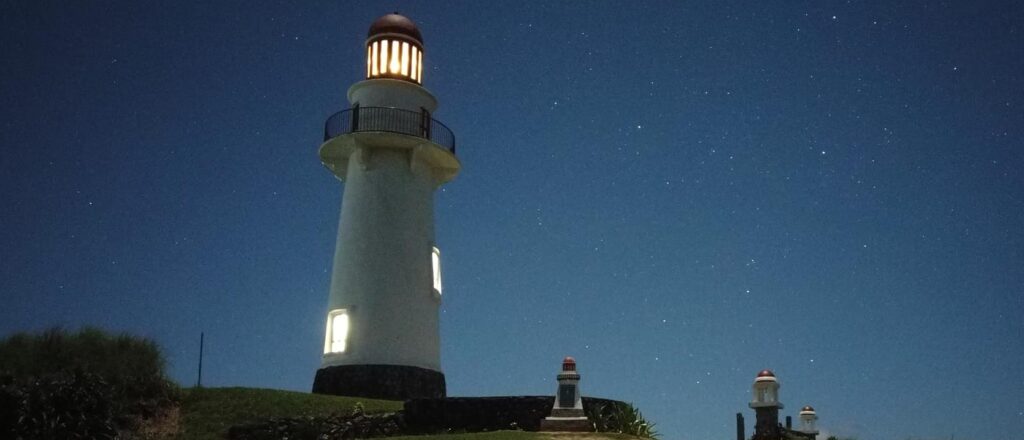
Vayang Rolling Hills – is one of the most visited tourist attractions in Batanes which is located just 2.5 kilometers from Basco. It provides tourists with a fascinating view of the vast West Philippine Sea, Sabtang Island, Itbayat Island, Batan Island, and Mt. Iraya. Also on the gently rolling hills grazing cows and goats can be seen. The fresh gentle breeze and great waves coming from the sea smash into the dramatic landscape and cliffs which is amazing to witness by the human eye. It is so out of this world.
Moreover, the crinkled topography creates a loop of various shades of green which is truly astounding. Our group stayed and have collectible moments at the picturesque Vayang Rolling Hills for nearly one hour. We open our music playlist and sing a love song while exploring and snapping photos of the undisturbed hills. There are not many activities inside the Vayang Rolling Hills except for taking pictures and enjoying the fantastic view. Please take note that in order to get to Vayang Rolling Hills, tourists must rent a bicycle or tricycle from the Basco town proper.
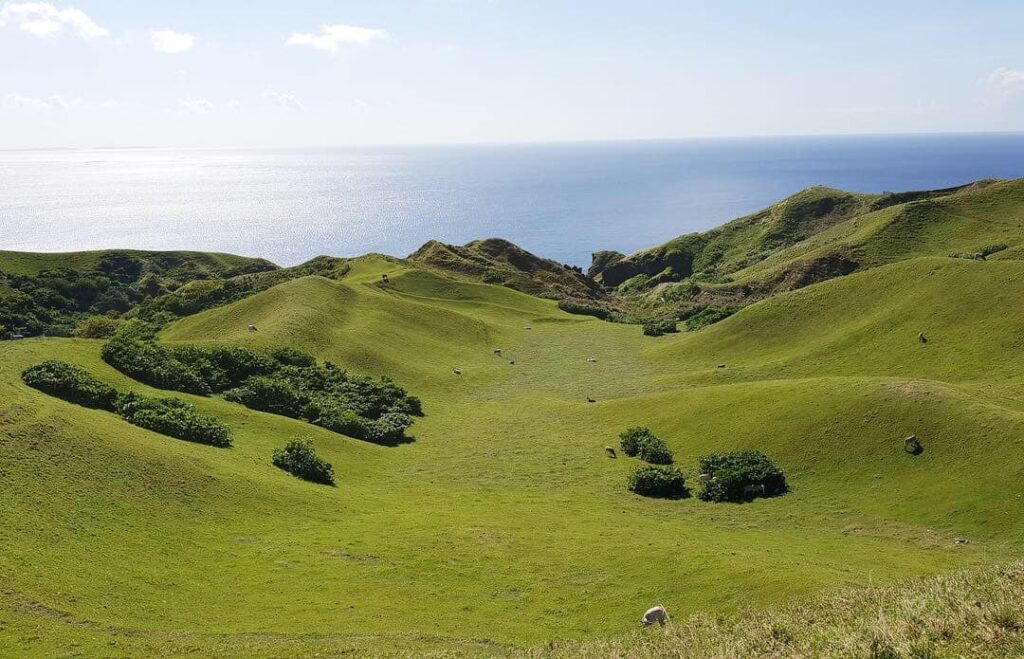
Tukon Chapel – is locally known as Mt. Carmel Chapel, situated at the top of the hill at the heart of Batan Island. According to its past history, Tukon Chapel was designed and constructed by the local fishermen and local artisans which is influenced by the Ivatan stone houses. It was opened to the public in the month of May in the year 2008. Presently, Tukon Chapel is notable for its conventional stone house arrangement and painted interiors. The chapel’s roof is embellished with the paintings of its patron saints which is cautiously done by the Pacita Abad Center for the art scholars. In addition, Tukon Chapel is a fine place for sightseeing the concurrence of the Pacific Ocean and the Philippine Sea.
Racuh A Payaman (Marlboro Country) – is one of the most outstanding and beautiful places in Batanes. It provides tourists with a once-in-a-lifetime view of Mt. Iraya, Tayid Lighthouse, Diura Beach, vast communal pasture land, dramatic cliffs, and the Philippine Sea. It is sometimes called Marlboro Country because of the rolling hills that are enveloped by a carpet of grazing verdant grass. Racuh A Payaman in the native Ivatan language means a vast place where visitors can walk around.
In my experience visiting this magical place, I can even see the microscopic grass swaying from a distance as the wind blows. Then I told myself that I’m so proud I was born in the Philippines. Without a doubt, the hills are super lovely and alive that I even see cows and carabaos that independently roam around. We sit on the grass as we take a rest from our long adventure at Batanes. Some of the members pick a spot where they can take amazing pictures of the glorious landscape. In my opinion, Racuh A Payaman is like icing on the cake on our Batanes tour. My ultimate dream came true.
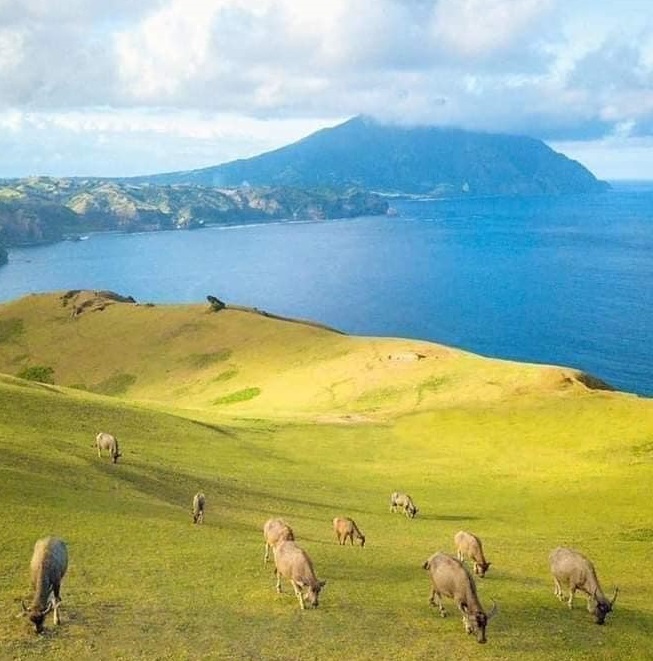
House of Dakay – is considered to be the oldest stone house in Batanes. It is one of the surviving stone houses in Batanes that still stand the test of time which makes UNESCO (United Nations Educational, Scientific and Cultural Organization) declare it as a world heritage building. The House of Dakay is made up of stone and limestone and is located in the town of San Jose de Ivana on Batan Island.
According to its past history, the House of Dakay was built in the year 1887 by a native local named Luisa Estrella. As time goes by, the house was named after Luisa’s nephew Jose Dakay which is become the owner of the stone house. In early 1990, a strong earthquake rattled Batanes but the stone house is standing firmly and undamaged. Presently, the House of Dakay is acknowledged as a heritage treasure of Batan Island because it symbolizes the Ivatan’s readiness for natural disaster and their toughness in those situations. Moreover, it provides locals shelter from the strong typhoon coming in. In my point of view, the House of Dakay is very akin to the throwback house I’ve seen in Television and movie shows.
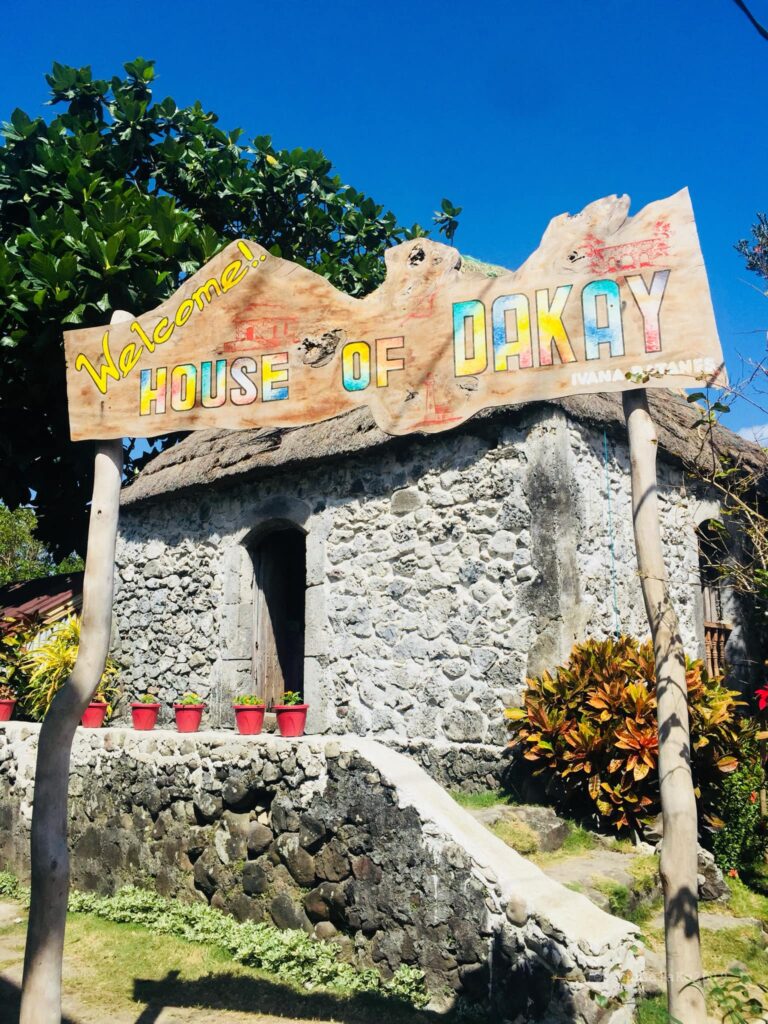
Valugan Boulder Beach – is a three-kilometer beach which is located along the shoreline of Batan Island. It was said that Valugan was the name of the beach because in the Ivatan language it refers to the east direction. Round boulders and tiny rocks fill the craggy eastern side of Batan Island like marbles intentionally dumped in a corner.
According to its past history, Valugan Boulder Beach formed around 400 AD when Mt. Iraya erupted. As a result of the volcanic eruption, numerous boulders and andesite rocks were pushed through to the surrounding beaches of Batan Island. Presently these boulders are perpetually burnished by the strong waves and tides coming from the Philippine Sea. From my experience visiting this glorious beach, I easily noticed that the extensive rock formation along the shoreline and green bluff is the main highlight of this beach.
From distance, I can hear the harmony of its pyramid wallowing stones as they are crushed by infinite waves coming from the sea. Also, the tempo matches the powerful winds that blow. For this reason, we stayed at the beach for a longer period of time. Without a doubt, Valugan Boulder Beach is a must-visit destination for every traveler because of its different kinds of beach experiences. I highly advise all tourists who are planning a trip to Batanes to visit this place and have an unforgettable view of sunrise or sunset.
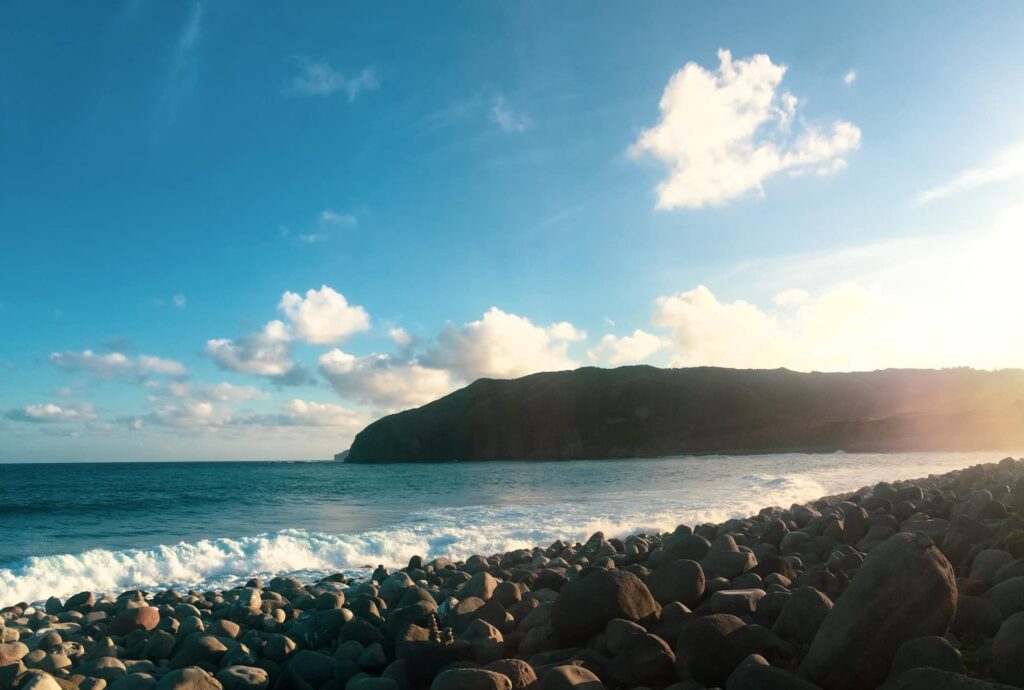
Honesty Coffee Shop – is a self-service store that contemplates the way of life of the people of Batanes. It is one of the most unique stores in Batanes because it is unmanned. Honesty Coffee Shop is located at Barangay Radiwan in the municipality of Ivana. It is just 65 feet away from the Port of Ivana and it is very close to the historical San Jose de Ivana Church. The Honesty Coffee Shop offers tourists an unforgettable view of the calming beach by sitting in a nipa hut and hammocks.
The shop opens around 9 am and they have a thermos filled with hot water. Honesty Coffee Shop is the name of the coffee store because it exhibits Ivatan’s trustworthiness and honesty traits to all local and international tourists. The coffee shop is an ancient living vestige that is very similar to the House of Dakay. Visitors coming from a long road trip can buy inexpensive various food such as local bread, crackers, cup noodles and pastry, cold drinks, valuable items, and souvenirs by listing them down in a notebook or a logbook and putting the payment on the designated box.
In my experience when I leave the coffee shop I feel amazed because I get what I wanted and I experience my honesty in the far place. I even ate snacks and drink a three-in-one coffee while waiting for others. Also, I feel that the honesty system is what makes this sari-sari store so special to visitors. Indeed, this coffee shop promotes honesty. According to its history, Honesty Coffee Shop was opened to the public in the year 1995 by retired persons named Jose and Elena Gabilo.

Chawa View Deck – is one of the highest points in Batanes which is located on South Batan Island. It offers visitors a spectacular view of the rough waves coming from the West Philippine Sea and crumbling big rocks of the coastland with abrupt cliffs. From my perspective when one of the group members showed me the aerial view of the Chawa View Deck, it was so soothing, revitalizing, and relaxing to my own two eyes. The green mountains meet the blue sea which is so awesome. For this reason, I fell in love with Batanes. We walk on a steep stairway to test our endurance and see breathtaking views from the underneath coastline. We stay at the viewing deck for nearly twenty-five minutes. Indeed it gives tourists a different view of the relaxing island life and scenery in Batanes. Also, Chawa View Deck has no entrance fee so it must be included in every traveler’s itinerary.
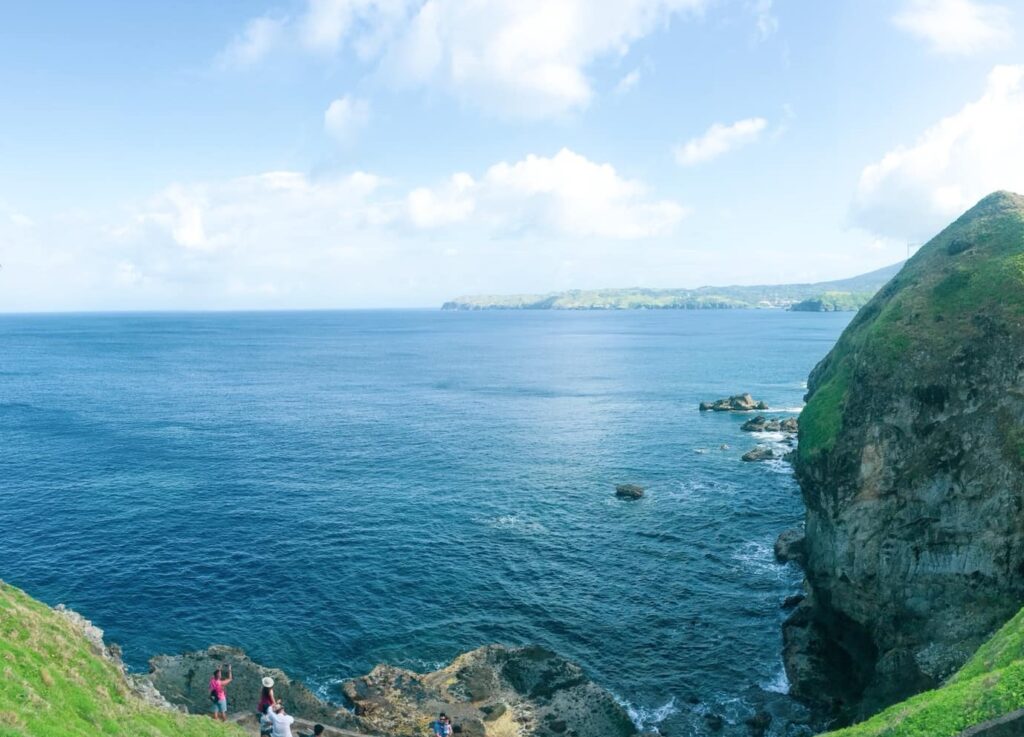
Dipnaysupuan Japanese Tunnel – is a frightening historical tunnel located at Tukon Hills in Basco. It was built in the year 1942 and is widely known to the locals as the asylum of the Imperial Japanese Army in Batanes during the Second World War. According to our local guide, the Japanese Army use this tunnel as a hideout place and a lookout point to see if there are incoming ships and warplanes from the seas. As we walk in the middle of the tunnel, I feel creepy because of the Second World War memorials. Our tour guide even shared ghost stories during the past years which makes my skin hair stand up and we feel so scary. Also, he told us that the Second World War is hell and we agreed with him because of the evidence in the tunnel. We finished crossing the short tunnel in roughly ten minutes. Please take note that if you want to visit this tunnel you must have a lot of courage and have a flashlight with you.

Savidug Stone Houses – is one of the main types of residence in Batanes which is situated in the small village on Sabtang Island. The stone houses in Batanes embody the characteristic of Ivatan which is durability and toughness. Although the province is on the path of more than twenty typhoons every year in the Philippines, the Savidug Stone Houses are still intact and well preserved for generations to come. When our group came to visit the stone houses, I notice that the village is still not overcrowded and everywhere we look there was a traditional house to take pictures of. Savidug village is home to the Sinadumparan type of stone houses where locals still live traditionally and peacefully. According to our guide, we can stay overnight in the village and in the morning we own and swim on the beach. The locals here are so friendly and respectful. We rent a local costume and take pictures of the marvelous stone houses. Then as we walk further, I’m glad to know the rich culture and history of the Savidug Stone Houses. At the end of the village, I can see a multicolored small chapel which is so fascinating. Without a doubt, it’s a must-visit destination in Batanes.
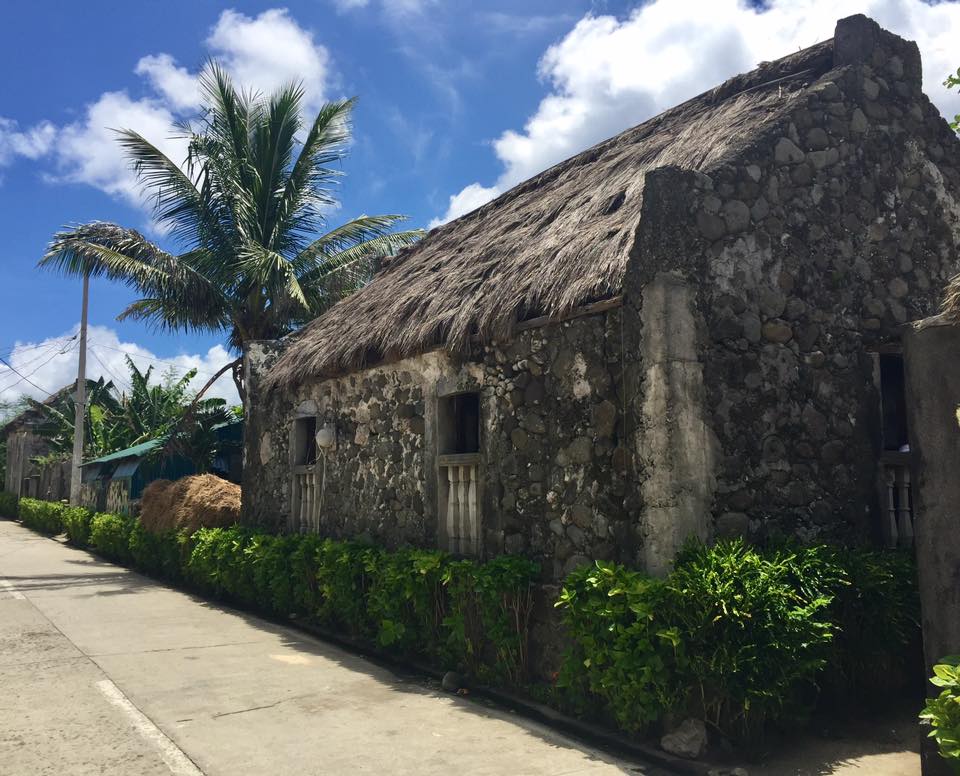
Morong Beach – is one of the popular beaches in Batanes which is situated on Sabtang Island. It gives visitors a more calming wave, short grass-carpeted hills view, and it is not crowded. According to our tour guide, if you’re lucky you can enjoy this all day by yourself. Morong Beach has meandering stairs with more than one hundred steps leading to the rocky seashore. At the backside of the meandering stairs, tourists can find a pristine mini pool where they can have fun. In addition, Morong Beach is where the Nakabuang Arch the famous symbol postcard of Batanes can be seen.

Chamantad-Tinyan Viewpoint – is one of the most beautiful sceneries in Batanes because it gives tourists the best view of Sabtang Island and the Pacific Ocean. In my opinion, Chamantad-Tinyan Viewpoint is the most captivating view I had on our Batanes tour and we have so much fun enjoying the place that we forget our difficult problems in life. It is definitely a stress reliever and I want to visit this place for the second time. I love all the spots and breathtaking views of the countryside. Craggy cliffs upsurge from the rolling hills which formed genuine magical frames for the beautiful sight of Chamantad Cove.

Tayid Lighthouse – is one of the most beautiful lighthouses in Batanes which is situated at Mahatao Island and faces the gigantic Pacific Ocean. According to its past history, Tayid Lighthouse was built close to the historical San Carlos Borromeo Church in the 17th century. The main tower of the Tayid Lighthouse is shaped like a hexagon which is contrasting with the Basco Lighthouse which has a rounded column shape. Nevertheless, Tayid Lighthouse is as old as the well-known Basco Lighthouse. It is topknotted on a picturesque hill on Batan Island and the room and ceiling of the lighthouse have a red lantern and supports a debris brickwork base. From the top of the lighthouse, visitors can see the panoramic scenery of Mt. Iraya, Diura Fishing Village, and the great Pacific Ocean. According to some historians, it was originally built as a lead for the local fishermen on the island. Presently, Tayid Lighthouse is one of the best tourist attractions in Batanes.
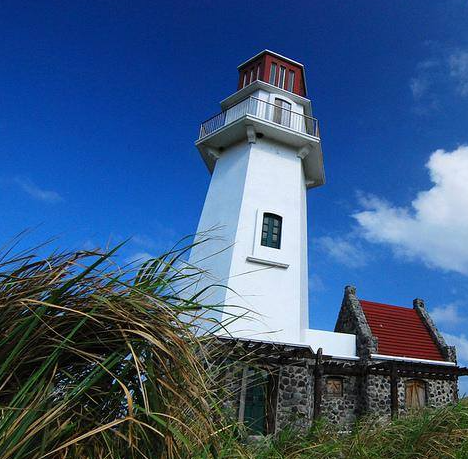
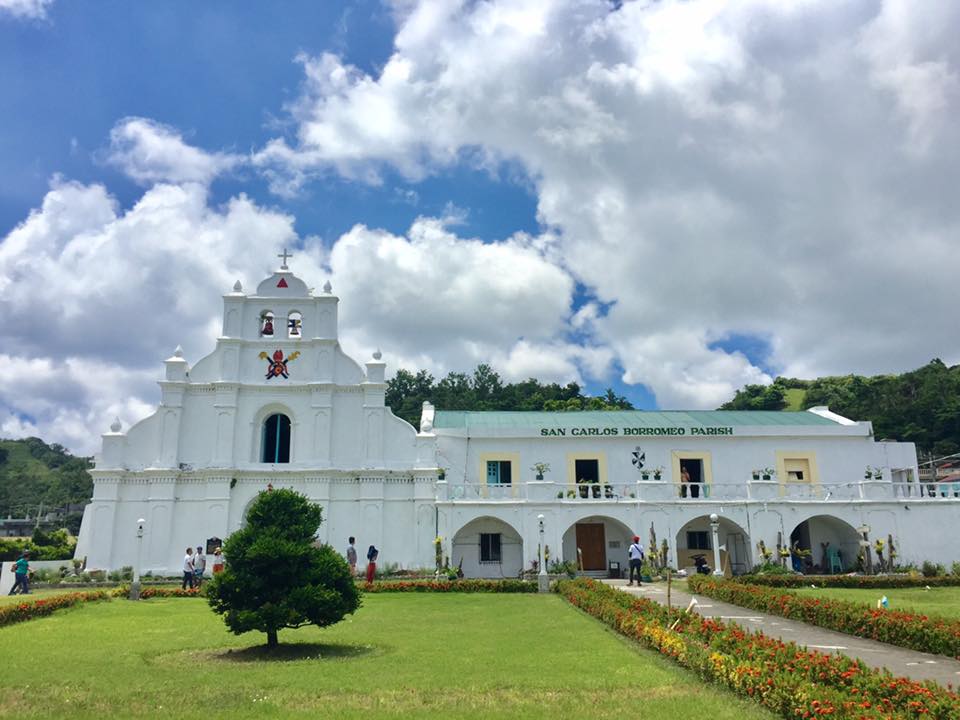
Alapad Rock Formation – is located at one of the hills in Barangay Imnajbu on Batan Island. It has an astounding view deck where tourists can stare at the bluish sea and an extravagant view of the lovely surrounding beaches. Alapad Rock Formation is where the notable “Blow UR Horn” signage can be found. This is where local and international tourists take a lot of pictures of the grand seaside views and mountain passes after their long road trip in Batanes. Our group relaxes at this place and kills some time where we take amazing pictures of the out-of-this-world landscape and seascapes. This is definitely a place to unwind and forget all your worries in life. According to our old local guide, Alapad Rock Formation is the setting place of the popular award-winning drama film in the year 1991 named “Hihintayin Kita sa Langit”. Also, he told us that the scenic road that cuts through a small hill is called Alapad Pass.
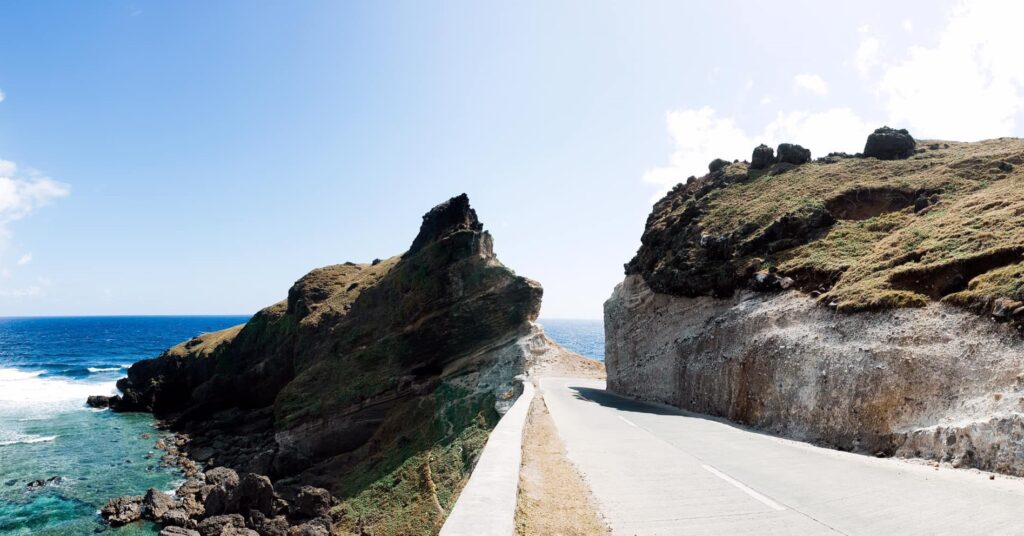
Chavayan Village – is a peaceful tiny village situated on Sabtang Island in Batanes. It is bounded by the vast sea on the west side and mountain ranges on the east side. Chavayan Village is home to traditional Ivatan stone houses and is only one kilometer away from the majestic Chamantad-Tinyan Viewpoint. The main source of income for the locals is fishing and farming. Chavayan came from the word “cha” in the native dialect which means abundant and “vay” which means arrowroot plant. A small chapel and a stone house can be seen at the end of the paved road of Chavayan Village. When we explore the village we saw a lady that wears a vakul headgear which is made from hand-sewn palm fronds. On the shoreline, we notice that the sand here is composed of small pebbles but the seaside view is great. We can even see some lodged tataya boats waiting for their turn to go fishing.
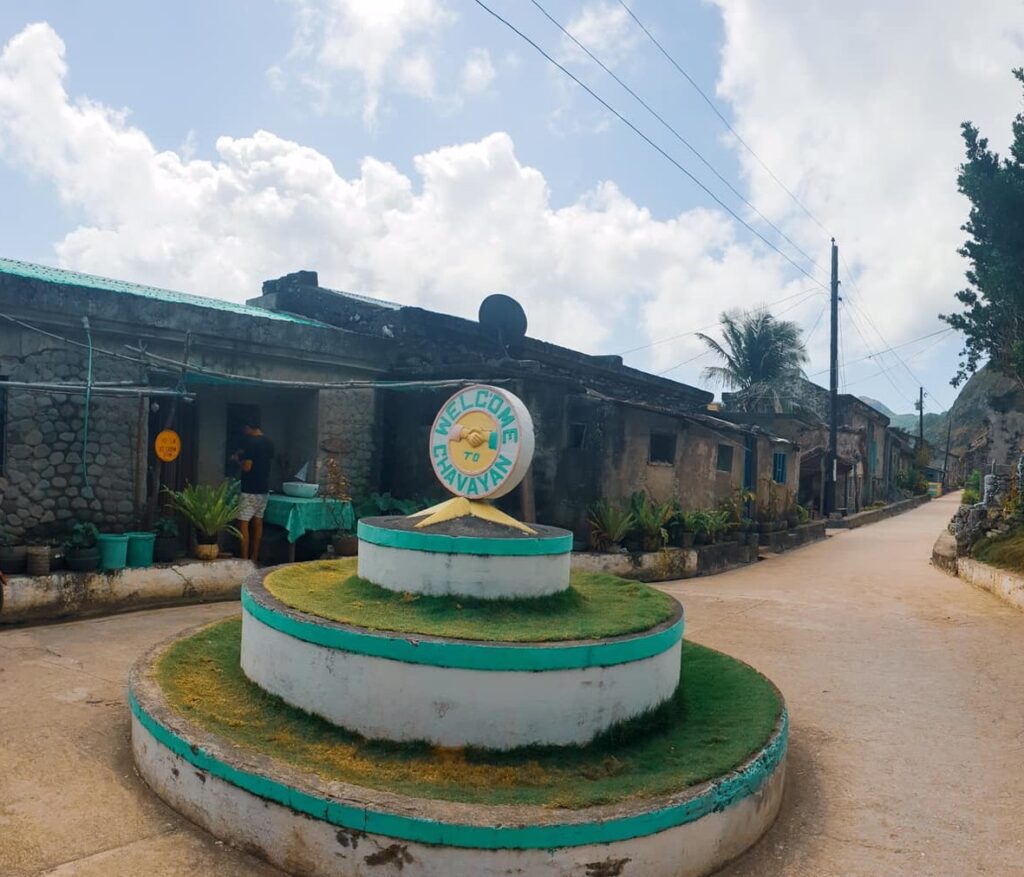
Itbayat Island – is shaped like a giant bowl and it’s home to the Philippines’ most dangerous port. Itbayat Island is surrounded by huge uneven cliffs and boulders that have a height of 30 to 80 meters above sea level. The island constitutes a great challenge for boatmen because there is no shoreline or beach on island where they can efficiently land the tourist on their boats. However, the Ivatan possess helpful traits and solidarity which result in a number of boatmen working together to make sure that every boat lands harmlessly. Itbayat Island is one of the northernmost islands in the Philippines and the biggest among the three mainlands in Batanes.
The island is remarkable for its steep cliffs and interiors of verdant rolling hills and grasslands. In addition, it also showcases various rainforests and caves. To get to Itbayat Island, tourists just need to ride a boat from the Port of Basco on Batan Island and it will take them two to three hours of boat ride to be able to land on the island.
The boat ride will depend on the current weather condition and on a pleasant and sunny day, the ride will only last for two hours and twenty minutes. On the other hand, if it’s cloudy and it’s raining, the travel time can last up to four hours. Nevertheless, the boat operators will cancel the boat ride when the water current and the wind are so strong and if there’s a typhoon. Moreover, the boat operators will tell the visitors to bring their personal medication, ointments, and motion sickness bag in case there’s an emergency happened.
As of 2022, Itbayat Island has a total population of 3500 people. The electricity on the island is not twenty-four hours operating. It starts at 6 am in the morning and runs only until twelve midnight. In my experience visiting this island, Itbayat Island is a great destination for hikers because they will reward themselves with a view of the paradise which is truly untouched by modernization. It is a destination that seldom feels like a foreign country because of its solemn rolling hills where untamed horses roam willingly, racing across the vast open fields. It’s also a place where vast interconnected caves can be explored and it holds secrets to the Batanes’ primitive dwellers.

Homoron Blue Lagoon – is widely known to the locals as the Spanish Lagoon which is situated on Batan Island, particularly in Mahatao. According to historians, it was called Spanish Lagoon because in the Spanish colonial period in Batanes only the Spaniards are allowed to swim and take a dip at the lagoon. Presently, Homoron Blue Lagoon is like a rugged natural pool and it’s considered among the top lagoon in the Philippines. On the other side of the lagoon, Homoron White Beach can be spotted and can be reached by just walking. The waves at the white beach are calmer and because of that, it is widely preferred by tourists as a great picnic spot.
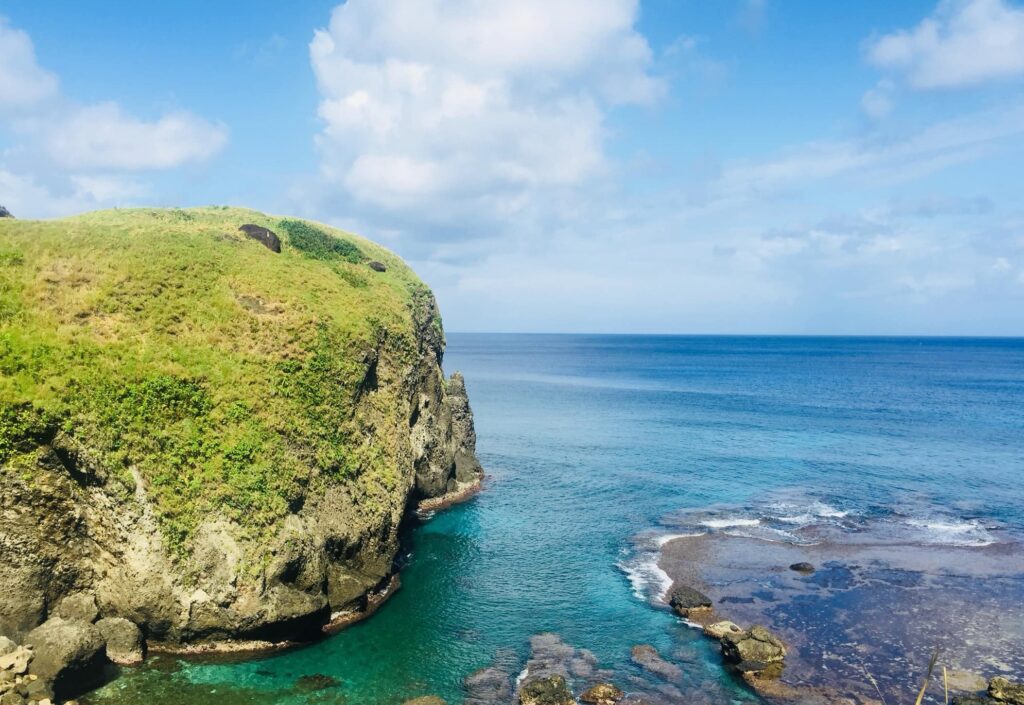
Mt. Iraya – is a beautiful dormant volcano and is the highest mountain in Batanes. It is considered a strictly protected zone by the local government unit and it can be seen from almost anywhere on Batan Island. Mt. Iraya has a height of 1009 meters above sea level or 3310 feet. It dominates the north of Batan Island with what feels like a permanent cloud sitting over its peak. The hike to the summit will last for around two and a half hours and another couple of hours to get down. The total hours to and from the summit could take up to six hours on an average pace. Mt. Iraya is a minor climb with a difficulty of 4/9 and a trail class of 1 to 3. In addition, Mt. Iraya is one of the twenty active volcanoes in the Philippines, and its last eruption is during the year 1454.
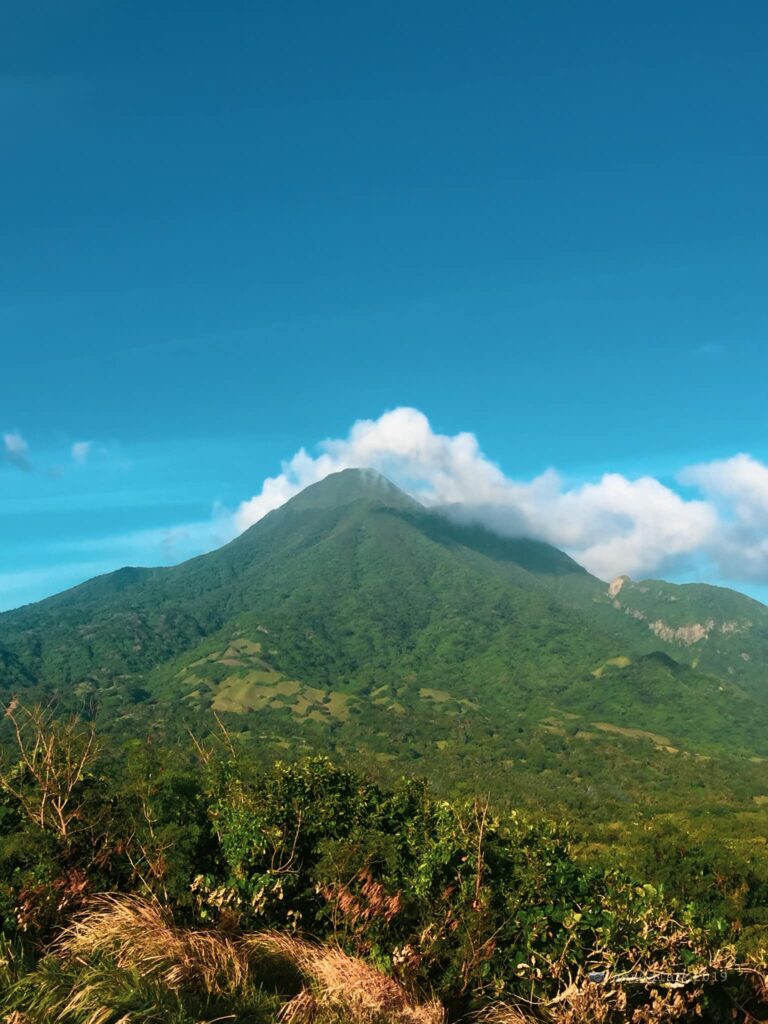
According to its past history, Mt. Iraya is a very significant mountain for the Ivatans. Golden-ager Ivatan inhabitants say that whenever someone dear to the people leaves, a ring of clouds forms around the mountain. Furthermore, the golden-ager talk of the old eruption of Mt. Iraya, and points toward the holes near the peak as the crater from which lava and steam gushed out. The mountain that rises directly from the sea is clarified in terms of volcanism.
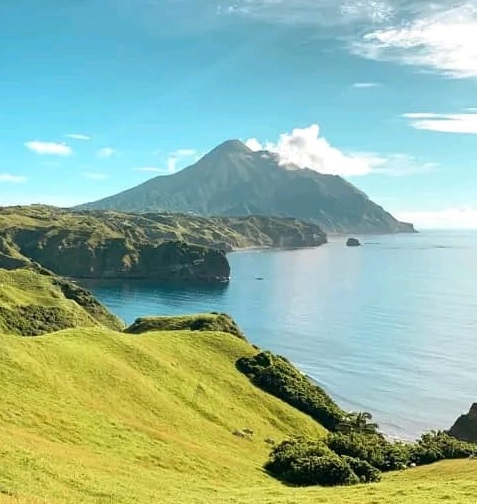
It was Wednesday morning when our group decided to hike Mt. Iraya. The name of our tour guide is Ray. The first path of the trail is on foothills and thirty minutes later the trail became a thick jungle on a small path. On the way up we saw a Batanes Philippine Viper which is considered to be a venomous snake and it’s only in the Batanes province can be found. According to our tour guide, many snakes can be seen while hiking Mt. Iraya so it is advisable to stay on the trail and be cautious as much as you can.
Also, he told us that picking a day to hike the mountain with clear views can be tricky. For this reason, we keep our fingers crossed. As we continue the hike we pass on thick bushes and dense forest. Ray told us that the trail is compact because there are not many tourists climbing Mt. Iraya. After nearly three hours of hiking, we finally reached the summit and from there we can see the incredible Pacific Ocean, West Philippine Sea, Mt. Matarem, and to the other side are the other Batanes islands. Then I told myself it was another day in paradise.
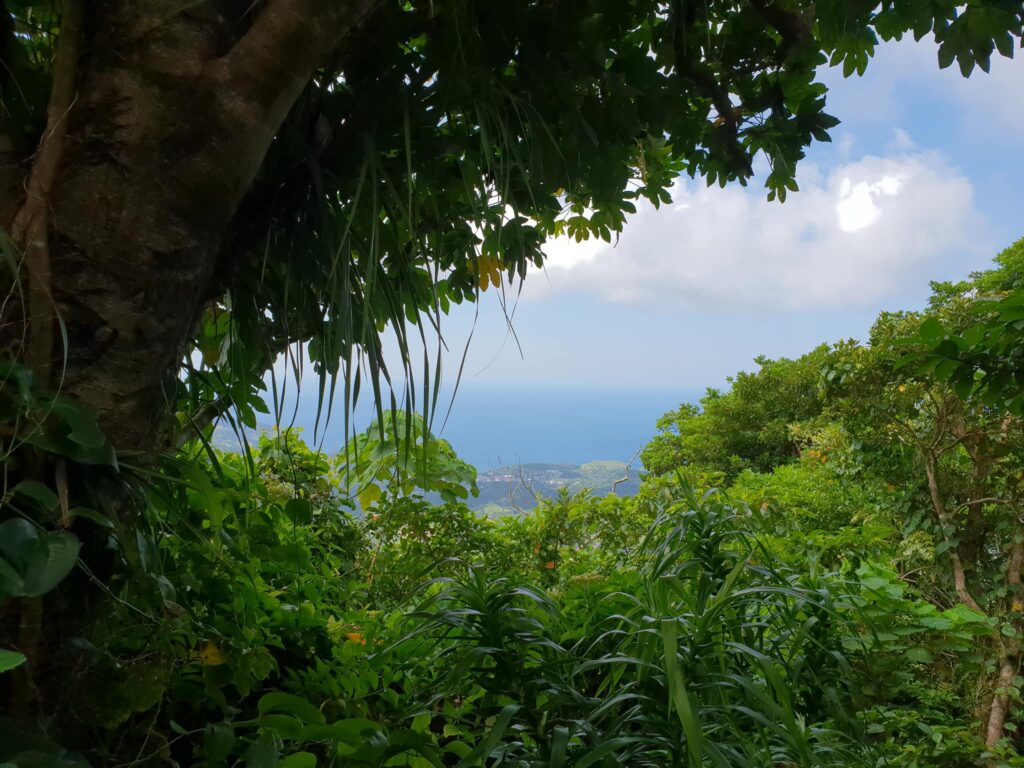
At the summit of Mt. Iraya, there are two small volcano craters that drop into the heart of the volcano covered in undergrowth. It is so difficult to see and large enough to fall down so we need to be very careful. We stayed at the summit for thirty minutes and after our group finished taking wonderful pictures we start our descent.
Descending from the peak of Mt. Iraya is treacherous along the steep muddy rainforest path as the light rain started to pour on us. As a result, we all slipped several times grabbing prickly bushes to stop us from careering too far down the hill. We go down at a much slower pace and we have laughable conversations with our tour guide. In the middle of our descent, we can see again the bountiful flora and fauna of the mountain which includes various birds.
We reach the jump-off point of Mt. Iraya around 3 pm. At this point, we thank God for climbing successfully the highest mountain in the province and we gave a tip to our friendly tour guide. Before we leave the municipality of Basco we take a quick timelapse of Mt. Iraya as a remembrance of its beauty.
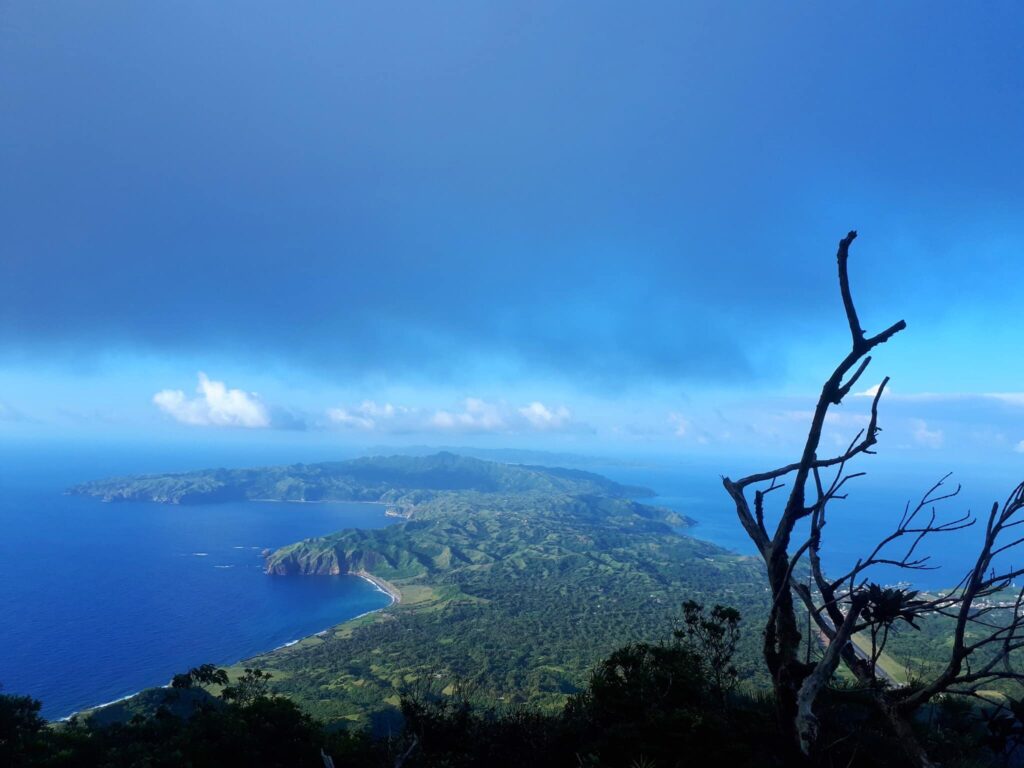
San Jose de Ivana Church – is a national historic landmark that was built in the year 1775. Presently, the ruins of the original church can still be seen at the back of the new church. The church is proof of Spanish and Filipino artisanship.
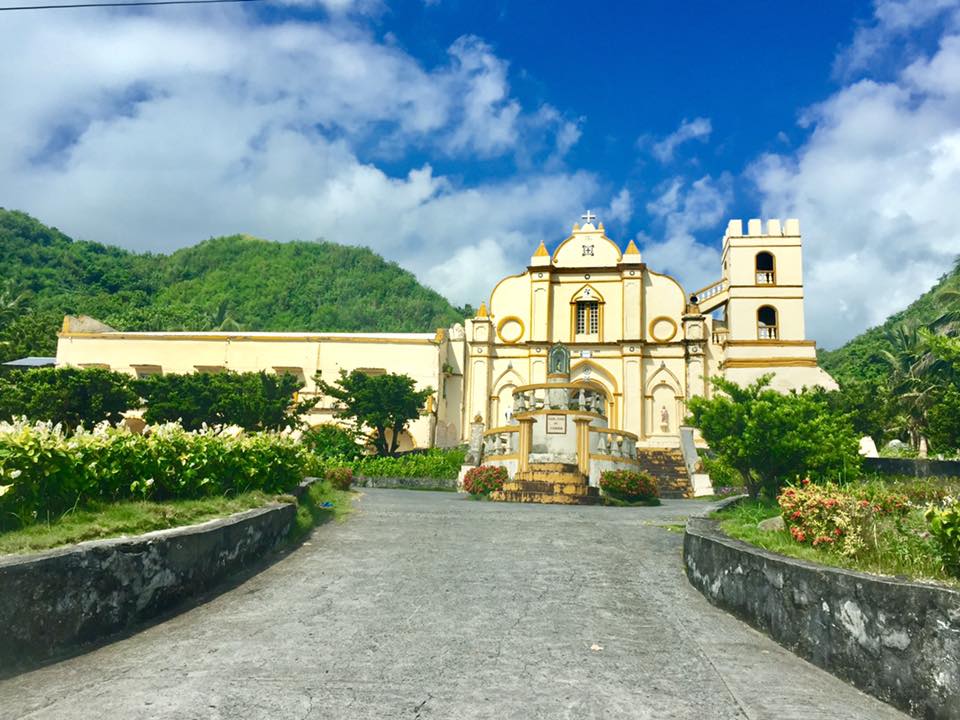
Sample 4-day itinerary to Batanes
Day 1 (Half-Day North Batan Tour)
2PM – Explore Welcome to Basco Arch, Tukon Chapel, Dipnaysupuan Japanese Tunnel, Valugan Boulder Beach
5PM – Picture taking at Vayang Rolling Hills
5:45PM – Arrive at Basco Lighthouse
Day 2 (Sabtang Half-Day Tour)
6AM – Explore Savidug Village, Sabtang Lighthouse, Saint Thomas Aquinas Chapel, Chamantad-Tinyan Viewpoint, Chavayan Village, Santa Rosa De Lima Chapel, Honesty Coffee Shop
11:30AM – Lunch
1PM – Morong Beach in Batanes, Duvek Bay and Sumnanga Village
Day 3 (South Batan Half-Day Tour)
8AM – Explore Tayid Lighthouse, Chawa View Deck, Racuh A Payaman (Marlboro Country), Alapad Rock Formation, Ruins of Songsong, House of Dakay
12:30PM – Maydangeb White Beach, Homoron Blue Lagoon, San Carlos Borromeo Church (Mahatao Church)
8PM – Milkyway viewing
Day 4
7:30AM – Breakfast
9:15AM – Check out of a hotel
10:15AM – Flight going back to Metro Manila
Sample 5-day and 4 night itinerary to Batanes
Day 1 (Arrival in Batanes)
11:35AM – Arrival at Basco Airport
12:15PM – Check-in at Basco Hotel
1:20PM – Lunchtime
2:45PM – Exploring Basco municipality by walking or riding a bicycle
3:50PM – Sightseeing of Tukon Chapel
5:45PM – Dinner
9PM – Sleeping time
Day 2 (Sabtang Tour)
6AM – Departure going to Port of Ivana
7AM – Riding a faluwa to reach the Sabtang Island
9AM – Explore Sabtang Island
12:30PM – Lunchtime
1:30PM – Continue exploring the Sabtang Island
2:30PM – Get inside the faluwa in order to go back to Port of Ivana
3:30PM – Arrival at Port of Ivana
4:15PM – Riding a bicycle, arrive at San Jose de Ivana Church and Honesty Coffee Shop
5:20PM – Watching the sunset, picture taking
6:30PM – Dinner
Day 3 (North Batan Tour)
7:30AM – Take a breakfast
8:20AM – Explore North Batan by walking or biking
12PM – Take a lunch
1:15PM – Continue the North Batan tour
5:30PM – End of tour
6:45PM – Dinner
Day 4 (South Batan Tour)
6:30AM – Take a breakfast
7:25AM – Start of South Batan tour
11:20AM – Lunchtime
12:30PM – Continue the tour
5:20PM – Buying souvenirs, end of tour
7:15PM – Dinner
Day 5 (Departure)
5:30AM – Wake up call, breakfast
7:45AM – Go to the souvenir shops
9AM – Hotel checkout, going to Basco Airport
10AM – Ride an airplane going back to Manila
Sample 8-day itinerary to Batanes (North Batan tour, South Batan tour, Sabtang Island tour, Itbayat Island tour)
Day 1 – North Batan tour
Immaculate Conception
Vayang Rolling Hills
Naidi Lighthouse
Tukon Chapel
Pagasa Radar Station
Fundacion Pacita
Idjang viewing
Japanese Tunnel
Vayang Boulder Beach
Day 2 – South Batan tour
Chawa Viewdeck
Mahatao Shelter Port (viewing)
Blue Lagoon (viewing)
Homoron White Beach
Home of Dakay
San Jose Church
Honesty Store
Mutchong Hills
Songsong Ruins (viewing)
Madangay Rock Formation
Tayid Lighthouse
Marlboro Hills
Day 3 – Sabtang Island tour
Morong Beach
Chamantad-Tinyan Viewpoint
Chavayan Village
Old Ivatan House
Savidug Village
Day 4
Sabtang Lighthouse & Back to Batan
Back to Berlen’s Homestay
Biking at Batan
Day 5 – Itbayat Island tour
Turungan Cave (oldest settlement)
*Burial Ship
*D’nem Island View
Yawran Village
*Vernacular Houses of Itbayat
*Basi Making
Itbayat Airport
Kavaywan Lake
Paganaman Port
Mauyen Cliff
Mt. Karoboboan View Deck
*Mavudis Island
*Misanga Island
*Ditarem Island
*Ali Island
*Siayan Island
*Itbayat Island
*D’nem Island
*Basco
*Sabtang
Itbayat Port
Rapang Cliff (Optional)
Day 6
Back to Berlen Lodge (Batan)
Biking
Visit Spring of Youth
Day 7
Hiking Mt. Iraya
Day 8
Arrive at Basco Airport
Ride an airplane going back to Manila (Goodbye Batanes)
Home sweet home
Things to bring on your visit to Batanes:
Umbrella
Poncho or raincoat during the wet season
Five to seven extra sets of clothes to change outfit
Sunblock
Water bottle or a tumbler
Insect repellent lotion or Mosquito repellent lotion
Windbreaker jackets during the cold months
Ziploc container (optional)
Lip balm (optional)
Waterproof dry bag
Valid ID and fully-vaccinated card or certificate
Pocket money
Jacket
Cap or hat
Mobile phone with charger
Powerbank
How to Go to Batanes
By commute:
Option 1:
- From Makati City, ride a taxi or a grab car going to Ninoy Aquino International Airport (NAIA).
- At the Ninoy Aquino International Airport, ride an airplane going to Basco, Batanes. The average flight time is around one hour and forty minutes.
Option 2:
- From Metro Manila, ride a P2P aircon bus going to Clark International Airport (CRK) in Pampanga.
- At the Clark International Airport, ride an airplane going to Batanes.
Option 3:
- From Cebu City, ride a taxi going to Mactan-Cebu International Airport.
- At the Mactan-Cebu International Airport ride an airplane going to Basco, Batanes.
Option 4:
- From Davao City, ride a taxi going to Davao International Airport.
- At the Davao International Airport ride an airplane going to Batanes.
Note: The only way to land in Batanes is by riding a passenger airplane because there are no passenger ferries and buses that go there directly. Skyjet, Philippine Airlines and others are commercial carriers that have a direct route going to Basco. Sometimes airfare is part of the package tour.
Reminders and Tips:
- Batanes have a Globe and Smart signal but not all places have a strong mobile signal. If you want to call someone’s phone number then better to be on Batan Island. On the other hand, the internet connection in Batanes is slow and limited only.
- Please take note that there’s no residential lot for sale or any lot that can be bought as long as there is a house next to it. Also, no outsider or foreigner can settle in Batanes unless you are married to an Ivatan or you have relatives who are Ivatans. That’s the law, that you can’t buy a lot if you’re not from Batanes. In addition, the price of the land on Batan Island is so expensive. In my opinion, I would rather live in Boracay because there’s a mall, hotels and nice restaurants there.
- The best time to visit Batanes is during the summer season which starts from the month of February up to May.
- To witness all the top sights in Batanes you must book online a four to five-day tour all over Batanes. Book accommodations and accredited tour operators tours with DOT (Department of Tourism) accredited Batanes establishments, resorts, and hotels. Remember that doing DIY or Do-it-yourself tours is not allowed. As a general rule, all tour activities of tourists must be booked and coordinated with a DOT-accredited tour operator and accompanied by an accredited tour guide.
- You can stay in Batanes for five days or more in order for you to experience chill travel and experience the local side. Also, you can also make Itbayat island as your last day but you need to spend an additional 3500 per head and if you are not dizzy you can handle the wild river rides then go for it.
- Bring the necessary things with you including an emergency kit and lots of pocket money.
- Expect everything to be expensive in Batanes because all goods are just loaded there. Most of their products are almost twice the price. To give you an idea, one Yakult cost twenty pesos. So I highly suggested that cooking your own breakfast can save you a lot of money. Also, you can prefer to have homestay accommodation rather than a hotel. In our experience, the homestay with mother Cita is worth it because you can also use her utensils. Moreover, it’s fifty percent cheaper to have a homestay, and it’s a good way to experience living with the locals in Batanes.
- The main power socket plug used in Batanes is the type A which is a two flat parallel pins and it operates on a 220 voltage with a frequency of sixty hertz.
- The Batanes tour is pricey because there’s only a limited flight going to Basco municipality.
- License is required in renting a motorbike since the road going up there is a little bit dangerous so be careful when driving. In addition, consider riding a tricycle instead of a van especially if have a good weather so you can feel the breathtaking views more and you own your time plus there is a Milky Way shot bonus and you will never get bored taking pictures especially when you have your own tour guide. Please take note that the tricycle can load up to three persons only and it is very safe.
- Using of drone in Batan Island cost 5000 pesos and using of drone in Sabtang Island cost 1000 pesos.
- There are only a few ATM (Automated Teller Machine) machine in Basco so its highly advise that tourist will bring lot of cash. In addition, business establishment do not accept credit card payment.
- The estimated budget and expenses in the Batanes tour is around 23,000 to 35,000 pesos which include airfare and accommodation facility.
- These are my recommended hotels to stay in Basco, Batanes: first is OYO 889 Amboy Hometel, second is Batanes Seaside Lodge and Restaurant, third is Den Den Guesthouse, fourth is Troy Lodge, and the fifth and the last is R&E Bed & Breakfast.
- As of October 2022, certificate of acceptance will no longer be required for persons travelling to the province of Batanes. However all travelers must be prepared to present vaccination cards or digital copy of vaccination certificate generated from VaxCertPH. In general, all tourist must be fully vaccinated and must obtain a clearance to tour from the Provincial Tourism Office prior to conduct of tour activities.
- Above all, climbing Mt. Iraya without a permit from DENR (Department of Environment and Natural Resources) or PAMB (Protected Area Management Board) is strictly prohibited. In addition, do not climb without a licensed tour guide and beware of Batanes Pit Vipers.
There you have it nomad. Always thank God for all the blessings, especially for the gift of life. Travel is a never-ending learning experience. So when you are stoned by stress file a long vacation leave. It’s not expensive to travel, you just need to be good at budgeting. For the most part, I aim that this Batanes travel guide has been useful to you. May you have a safe day ahead. Stay warm, fit, and healthy, everyone. Until next time.


